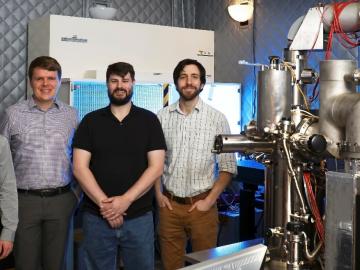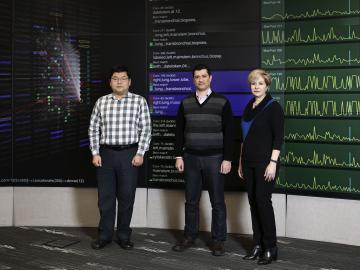Filter News
Area of Research
- (-) Supercomputing (43)
- Advanced Manufacturing (5)
- Biological Systems (5)
- Biology and Environment (4)
- Biology and Soft Matter (1)
- Building Technologies (4)
- Chemical and Engineering Materials (2)
- Chemistry and Physics at Interfaces (6)
- Clean Energy (89)
- Climate and Environmental Systems (2)
- Computational Biology (1)
- Computational Chemistry (1)
- Energy Frontier Research Centers (8)
- Fossil Energy (1)
- Fuel Cycle Science and Technology (1)
- Functional Materials for Energy (6)
- Fusion Energy (2)
- Geographic Information Science and Technology (2)
- Isotope Development and Production (1)
- Materials (91)
- Materials Synthesis from Atoms to Systems (5)
- Materials Under Extremes (6)
- National Security (2)
- Neutron Data Analysis and Visualization (2)
- Neutron Science (36)
- Nuclear Science and Technology (20)
- Nuclear Systems Modeling, Simulation and Validation (1)
- Quantum Condensed Matter (2)
- Reactor Technology (1)
- Sensors and Controls (2)
- Transportation Systems (2)
Media Contacts

The US Department of Energy’s Oak Ridge National Laboratory is once again officially home to the fastest supercomputer in the world, according to the TOP500 List, a semiannual ranking of the world’s fastest computing systems.

In an effort to reduce errors in the analyses of diagnostic images by health professionals, a team of researchers from the Department of Energy’s Oak Ridge National Laboratory has improved understanding of the cognitive processes

The U.S. Department of Energy’s Oak Ridge National Laboratory today unveiled Summit as the world’s most powerful and smartest scientific supercomputer.

Scientists at the Department of Energy’s Oak Ridge National Laboratory are the first to successfully simulate an atomic nucleus using a quantum computer. The results, published in Physical Review Letters, demonstrate the ability of quantum systems to compute nuclear ph...

Scientists at Oak Ridge National Laboratory have conducted a series of breakthrough experimental and computational studies that cast doubt on a 40-year-old theory describing how polymers in plastic materials behave during processing.


Nuclear scientists at Oak Ridge National Laboratory are retooling existing software used to simulate radiation transport in small modular reactors, or SMRs, to run more efficiently on next-generation supercomputers. ORNL is working on various aspects of advanced SMR designs through s...






